General description
We are committed to bringing you greener alternative products, which adhere to one or more of The 12 Principles of Green Chemistry.This antibody is Preservative-free, produced without the harm or sacrifice of animals and exceptionally stable to allow for ambient shipping and storage if needed and thus aligns with "Waste Prevention", "Designing Safer Chemicals" and "Design for Energy Efficiency". Click here for more information.
ZooMAb® antibodies represent an entirely new generation of recombinant monoclonal antibodies.
Each ZooMAb® antibody is manufactured using our proprietary recombinant expression system, purified to homogeneity, and precisely dispensed to produce robust and highly reproducible lot-to-lot consistency. Only top-performing clones are released for use by researchers. Each antibody is validated for high specificity and affinity across multiple applications, including its most commonly used application. ZooMAb® antibodies are reliably available and ready to ship when you need them.
Specificity
Clone 2D2 is a ZooMAb® Rabbit recombinant monoclonal antibody that specifically detects Stat3. It targets an epitope within 16 amino acids from the C-terminal region.
Immunogen
KLH-conjugated linear peptide corresponding to 16 amino acids from the C-terminal region of human Stat3.
Application
Quality Control Testing
Evaluated by Western Blotting in C6 cell lysate.
Western Blotting Analysis: A 1:10,000 dilution of this antibody detected Stat3 in C6 cell lysate.
Tested applications
Western Blotting Analysis: A 1:10,000 dilution from a representative lot detected Stat3 in Cos7, A549, Jurkat, and HepG2 cell lysates.
Immunocytochemistry Analysis: A 1:100 dilution from a representative lot detected Stat3 in Jurkat cells.
Immunohistochemistry (Paraffin) Analysis: A 1:100 dilution from a representative lot detected Stat3 in human lung cancer tissue sections.
Flow Cytometry Analysis: 0.1 μg from a representative lot detected Stat3 in one million Jurkat cells.
Affinity Binding Assay: A representative lot of this antibody bound Stat3 with a KD of 3.8 x 10-8 in an affinity binding assay.
Note: Actual optimal working dilutions must be determined by end user as specimens, and experimental conditions may vary with the end user
Target description
Signal transducer and activator of transcription 3 (UniProt: P40763; also known as Stat3, Acute-phase response factor) is encoded by the STAT3 (also known as APRF) gene (Gene ID: 6774) in human. STAT3 is expressed in most cell types and is predominantly cytoplasmic in its latent form. It serves as a cytoplasmic transcription factor that has a dual function of signal transduction and activation of transcription. It is activated by multiple cytokines, growth factors, and leptin. Stat3 is shown to shuttle between the nucleus and the cytoplasm. It is activated by phosphorylation at Tyrosine 705, which induces dimerization, nuclear translocation, and DNA binding. A motif comprising of amino acids 150-162 is essential for its nuclear import. In the nucleus it recruits coactivators, such as NCOA1 or MED1, to the promoter region of the target genes. It binds to DNA as either a homodimer or as a heterodimer with Stat1. Stat3 regulates inflammatory response by regulating differentiation of naive CD4+ T-cells into T-helper Th17 or regulatory T-cells. It may also play an anti-apoptotic role by transactivating BIRC5 expression under leptin activation. Cytoplasmic Stat3 is shown to repress macroautophagy by inhibiting EIF2AK2/PKR activity. Stat3 is also involved in cell cycle regulation by inducing the expression of key genes that are involved in the progression from G1 to S phase. Constitutively activated Stat3 is reported in a number of human cancers. This ZooMAb® recombinant monoclonal antibody, generated by our propriety technology, offers significantly enhanced specificity, affinity, reproducibility, and stability over conventional monoclonals. (Ref.: Shen, S., et al. (2012). Mol. Cell. 48(5); 667-680; Jiang, H., et al. (2008). Biochem. Biophys. Res. Commun. 368(1); 1-5; Levy, DE., and Lee C-K. (2002). J. Clin. Invest. 109(9); 1143-1148).
Physical form
Purified recombinant rabbit monoclonal antibody IgG, lyophilized in PBS with 5% Trehalose, normal appearance a coarse or translucent resin. The PBS/trehalose components in the ZooMAb formulation can have the appearance of a semi-solid (bead like gel) after lyophilization. This is a normal phenomenon. Please follow the recommended reconstitution procedure in the data sheet to dissolve the semi-solid, bead-like, gel-appearing material. The resulting antibody solution is completely stable and functional as proven by full functional testing. Contains no biocide or preservatives, such as azide, or any animal by-products. Larger pack sizes provided as multiples of 25 μL.
Reconstitution
300 μg/mL after reconstitution at 25 μL per vial. Please refer to guidance on suggested starting dilutions and/or titers per application and sample type.
Storage and Stability
Recommend storage of lyophilized product at 2-8°C; Before reconstitution, micro-centrifuge vials briefly to spin down material to bottom of the vial; Reconstitute each vial by adding 25 μL of filtered lab grade water or PBS; Reconstituted antibodies can be stored at 2-8°C, or -20°C for long term storage. Avoid repeated freeze-thaws.
Legal Information
ZooMAb is a registered trademark of Merck KGaA, Darmstadt, Germany
Disclaimer
Unless otherwise stated in our catalog or other company documentation accompanying the product(s), our products are intended for research use only and are not to be used for any other purpose, which includes but is not limited to, unauthorized commercial uses, in vitro diagnostic uses, ex vivo or in vivo therapeutic uses or any type of consumption or application to humans or animals.
- UPC:
- 12352203
- Condition:
- New
- Availability:
- 3-5 Days
- Weight:
- 1.00 Ounces
- HazmatClass:
- No
- MPN:
- ZRB1764-25UL












